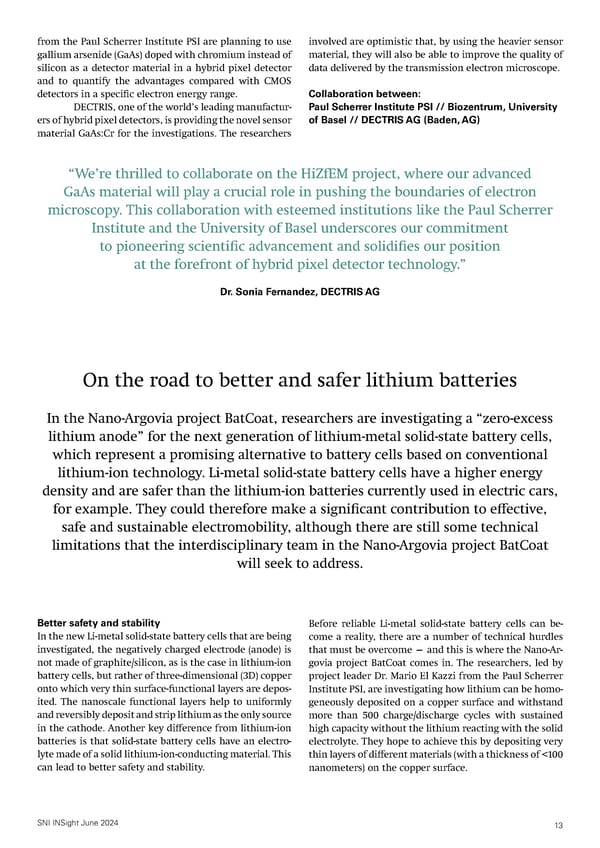from the Paul Scherrer Institute PSI are planning to use involved are optimistic that, by using the heavier sensor gallium arsenide (GaAs) doped with chromium instead of material, they will also be able to improve the quality of silicon as a detector material in a hybrid pixel detector data delivered by the transmission electron microscope. and to quantify the advantages compared with CMOS detectors in a speci昀椀c electron energy range. Collaboration between: DECTRIS, one of the world’s leading manufactur- Paul Scherrer Institute PSI // Biozentrum, University ers of hybrid pixel detectors, is providing the novel sensor of Basel // DECTRIS AG (Baden, AG) material GaAs:Cr for the investigations. The researchers “We’re thrilled to collaborate on the HiZfEM project, where our advanced GaAs material will play a crucial role in pushing the boundaries of electron microscopy. This collaboration with esteemed institutions like the Paul Scherrer Institute and the University of Basel underscores our commitment to pioneering scienti昀椀c advancement and solidi昀椀es our position at the forefront of hybrid pixel detector technology.” Dr. Sonia Fernandez, DECTRIS AG On the road to better and safer lithium batteries In the Nano-Argovia project BatCoat, researchers are investigating a “zero-excess lithium anode” for the next generation of lithium-metal solid-state battery cells, which represent a promising alternative to battery cells based on conventional lithium-ion technology. Li-metal solid-state battery cells have a higher energy density and are safer than the lithium-ion batteries currently used in electric cars, for example. They could therefore make a signi昀椀cant contribution to e昀昀ective, safe and sustainable electromobility, although there are still some technical limitations that the interdisciplinary team in the Nano-Argovia project BatCoat will seek to address. Better safety and stability Before reliable Li-metal solid-state battery cells can be- In the new Li-metal solid-state battery cells that are being come a reality, there are a number of technical hurdles investigated, the negatively charged electrode (anode) is that must be overcome — and this is where the Nano-Ar- not made of graphite/silicon, as is the case in lithium-ion govia project BatCoat comes in. The researchers, led by battery cells, but rather of three-dimensional (3D) copper project leader Dr. Mario El Kazzi from the Paul Scherrer onto which very thin surface-functional layers are depos- Institute PSI, are investigating how lithium can be homo- ited. The nanoscale functional layers help to uniformly geneously deposited on a copper surface and withstand and reversibly deposit and strip lithium as the only source more than 500 charge/discharge cycles with sustained in the cathode. Another key di昀昀erence from lithium-ion high capacity without the lithium reacting with the solid batteries is that solid-state battery cells have an electro- electrolyte. They hope to achieve this by depositing very lyte made of a solid lithium-ion-conducting material. This thin layers of di昀昀erent materials (with a thickness of
 SNI INSight June 2024 Page 12 Page 14
SNI INSight June 2024 Page 12 Page 14